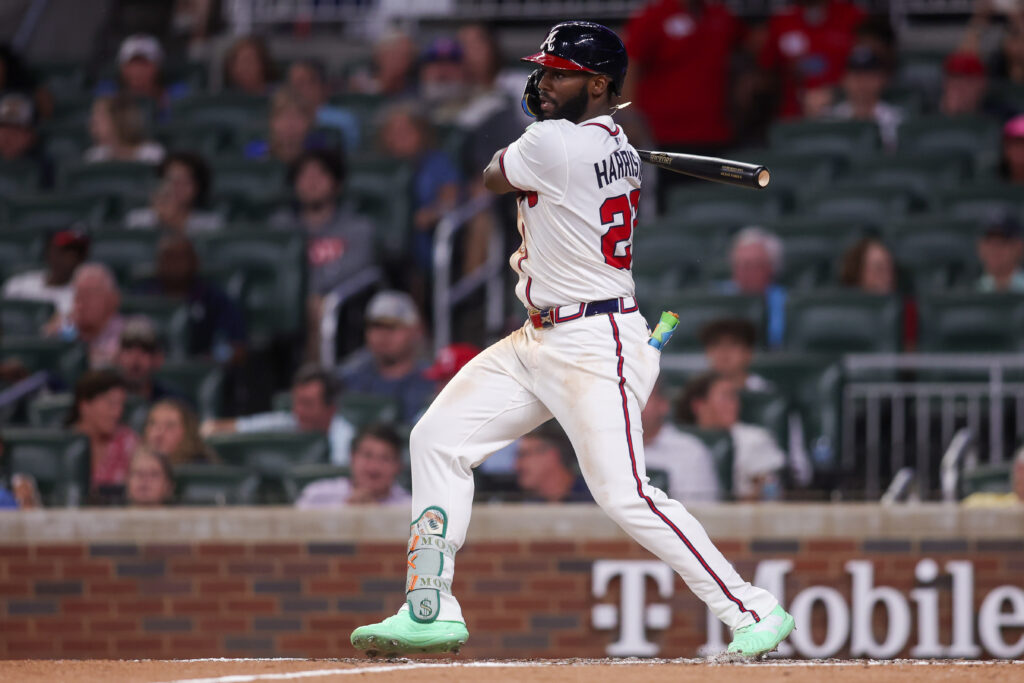Michael Harris II, the talented center fielder for the Atlanta Braves, has been experiencing a significant turnaround in his performance during the 2025 MLB season. After a challenging first half, Harris has rediscovered his stroke at the plate, showcasing the potential that made him the National League Rookie of the Year in 2022.
Harris has a rare blend of power, speed, and exceptional defense that has endeared him to fans and positioned him as one of baseball’s most exciting young talents.
This mid-season surge has been fueled by crucial adjustments to his batting mechanics and a renewed confidence that promises to impact the Braves for the remainder of the season and beyond.
Michael Harris: The Resurgence of a Young Star
Early Season Struggles and the Path to Adjustment
Harris struggled to replicate the success of his previous seasons in the initial portion of the 2025 campaign. Through the first 93 games, he posted a concerning .210 batting average and a .551 OPS, ranking last among qualified MLB players in the latter category. This dip in production even sparked debate among some over whether he should be sent down to Triple-A to regain his form. There were even rumors that he could get traded this winter if he didn’t begin to improve.
However, the tide began to turn around the All-Star break, when Harris made a significant adjustment to his batting stance. He opted to raise his hands closer to his shoulder, a position more reminiscent of his early career success, including his rookie year. This change aimed to provide a better starting point for attacking the ball, addressing a tendency for his bat to lag with a lower hand position. This was a bold move mid-season, but Harris, recognizing the need for change, took the risk, and it is undoubtedly paying off.
Post-All-Star Break Dominance
Since the All-Star break, the impact of these adjustments has been undeniable. Harris has transformed into one of the best hitters in baseball, leading all center fielders in several key offensive categories during this period.
Harris is hitting .398 with 49 hits in 30 games after the All-Star break, but the improvements extend beyond traditional stats. His barrel rate has more than doubled, while his ground ball rate has decreased nearly 20 percent. Also, his average exit velocity is among the league leaders, further showcasing his powerful contact.
This is particularly impressive given that his higher hand position appears to have improved the efficiency of his swing, leading to more consistent and impactful contact. In fact, his increase in weighted on-base average has coincided with an increase in swinging at pitches inside the strike zone, suggesting improved plate discipline and a more patient approach.
Final Thoughts
While the Braves may be playing out another injury-marred season, Harris’s resurgence provides a silver lining and gives reason for optimism for the remainder of the season and the team’s future. The NL East is certainly out of reach, but if Harris can carry this into next season, the Braves are likely to bounce back in 2026.
Beyond offensive contributions, Harris continues to be a highlight-reel defender in center field. Even during hitting struggles, elite defense remained a constant, providing valuable support to the team.
This combination of offensive power and gold-glove defense makes him a cornerstone of the Braves’ success. If Harris maintains his current trajectory, a 20/20 season (20 home runs and 20 stolen bases) is within reach, a milestone he has yet to achieve in his promising career. The last six weeks of the regular season offer a prime opportunity for him to solidify this career-best performance.
His exceptional second-half performance highlights his inherent ability to adjust and overcome challenges, a trait that will undoubtedly serve him well in his promising career. The next step for Harris is to translate these second-half surges into a more consistent, full-season performance, which could unlock the All-Star caliber play many Braves fans have anticipated.
Main Image: Brett Davis-Imagn Images



